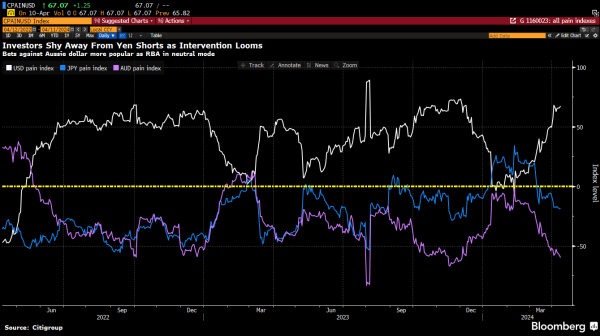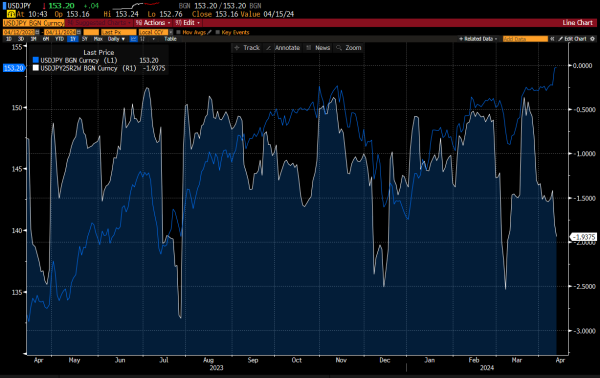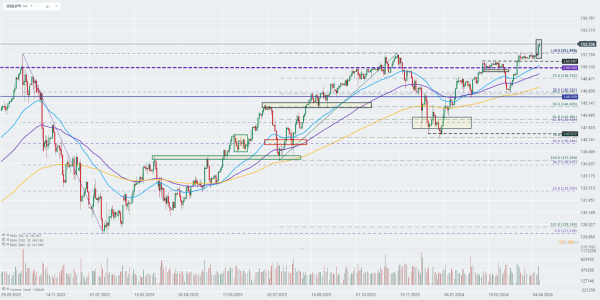Chart of the day: USDJPY (11.04.2024)
In the FX market, the Japanese yen invariably tries to catch the investors' attention. Yesterday's CPI report from the US indicated clearly higher pressure in the world's main economy, which effectively strengthened the dollar internationally. At this point, the swaps market is pricing that the Fed's first full 25bp cut will not take place until November this year! As a reminder, as recently as Tuesday we were expected to see exactly two such cuts by that time. The hawkish turn on the dollar, coupled with the BoJ's willingness to maintain accommodative monetary policy, is causing the USDJPY pair to break out to new multi-year highs.
Below are some fundamental charts depicting the FX market situation:

There is interest in short positions on the yen, but not as much as on the Australian dollar. The beneficiary of the "higher for longer" shift, however, seems to be the US dollar. The chart shows the PAIN indicator compiled by Citi. It is designed to reflect crowded market conditions on currencies. Source: Bloomberg Financial LP

Hedge funds and other asset managers are trying to factor into their positions the growing risk of an actual intervention in the FX market. Positioning in the options market using a risk reversal hedging strategy is now at its highest levels since early March. In the past, the USDJPY pair often showed correlative relationships with this indicator, while now the actual market seems to disbelieve the hawkish announcements of the BoJ and the Ministry of Finance. Source: Bloomberg Financial LP

USDJPY breaks out to new multi-year highs. As long as the BoJ doesn't change its narrative towards monetary policy or there is no major intervention in the market, the overall uptrend can theoretically be sustained, although there are a few risks here as well. One is the money market, which could force the BoJ to make firmer moves. And here the valuation of further rate hikes has changed (July is already fully priced in; at the beginning of the week the probability of this event was estimated at 61.7%). Source: xStation